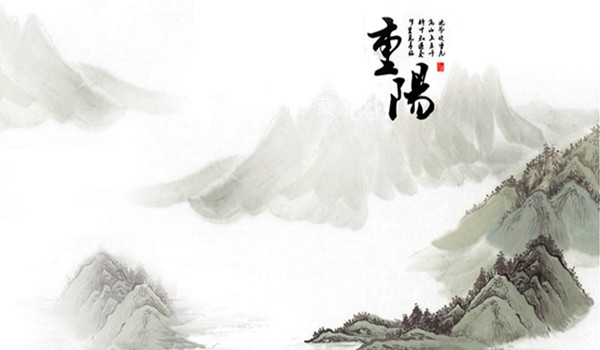
The 9th day of the 9th lunar month is the traditional Chongyang Festival, or Double Ninth Festival. It usually falls in October in the Gregorian calendar.
In an ancient and mysterious book Yi Jing, or The Book of Changes, number "6" was thought to be of Yin character, meaning feminine or negative, while number "9" was thought to be Yang, meaning masculine or positive. So the number nine in both month and day create the Double Ninth Festival, or Chongyang Festival.
Chong in Chinese means "double." Also, as double ninth was pronounced the same as the word to signify "forever", both are "Jiu Jiu," the Chinese ancestors considered it an auspicious day worth celebration. That's why ancient Chinese began to celebrate this festival long time ago.
Here are 6 things you may not know about Double Ninth Festival.
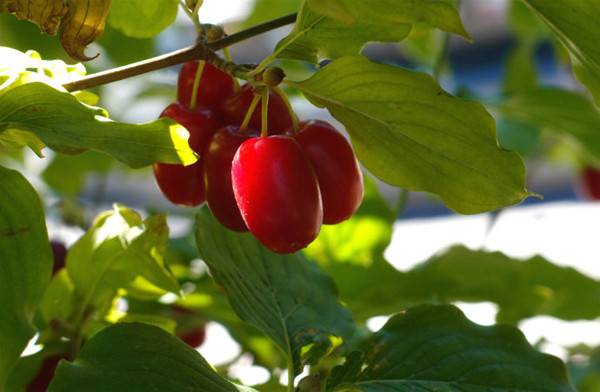
Wearing Cornel Twigs (Dogwood)
The cornel (dogwood) is a species of evergreen arbor; it is heavy-scented plant whose fruit is edible and stock and leaves can be medicinal materials. They can expel insects, get rid of the humidity, help digestion and cure inner heat. It puts out purple flowers in spring and bears, in autumn, purplish-brown fruit that is sour, puckery and mild in nature.
The custom of wearing cornel twigs (dogwoods) was already very popular in the Tang Dynasty (618-907); it was made an official day – off for common people by an imperial edict. The ancient people believed that planting cornel twigs (dogwoods) on Double Ninth Festival could prevent diseases and avoid disasters. They also wear the cornel twigs (dogwoods) on arms or heads or put them in sachets. Most of people that follow the custom are women and children, and in some places men also wear them. In Song Dynasty, people sent each other colorful silk cut into cornel twigs (dogwoods) or chrysanthemum and wore them.
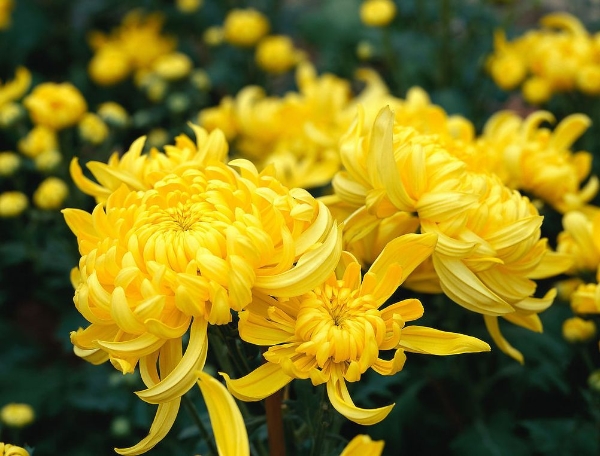
Enjoying Chrysanthemum Flowers
Chrysanthemum originated in China and was recorded in some Chinese books as early as the 5th century B.C. The flower was introduced, as imperial flower, into Japan in the Tang Dynasty. Then it was introduced into Britain in the 12th century, into the continent of Europe in the 17th century, and into the USA in the 19th century. Also known as "yellow flower", chrysanthemum is of varied species in the composite family. Though its florescence lasts long, this perennial herb usually begins to bloom in the 9th lunar month, lending much festive flavor to the Double Ninth Day. That’s why the month is also referred to as "the month of chrysanthemum".
The flower was favored by poets through the ages, because it is one of the seldom flowers that bloom in late autumn. It is said that Tao Yuanming, a famous poet of the Jin Dynasty, grew many species of chrysanthemum while he lived as hermit and the flower, when in full bloom, drew many of Tao’s relatives and friends. Huang Chao, leader of the peasant uprising in the Tang Dynasty, wrote a lot of poems about chrysanthemum, which were compiled into an anthology of Chrysanthemum and, even now, are oft-quoted. Du Fu, a great Tang Dynasty poet, wrote more than ten poems singing the praises of the flower.
Chinese folks were fond of enjoying chrysanthemum on the Double Ninth Day long before. Chrysanthemum blossom in the ninth lunar month have a beautiful name of "flower of longevity". The custom of wearing chrysanthemum appeared in the Tang Dynasty already and was always very popular throughout the time afterwards. The entrances of some taverns in the Song Dynasty (960-1279) were decorated with the flowers on the day, which was supposed to incite customers’ desire for wine. Chrysanthemum displays were usually held immediately after the day in some regions of China in the Qing Dynasty. People in Beijing began to stick the chrysanthemums on doors and windows to "get rid of the bad luck and bring in the good ones" which is an alteration of the custom of wearing Chrysanthemum on head. At these displays people might enjoy chrysanthemum flowers, take part in poem-composing competitions or watch painters drawing paintings of chrysanthemum flowers. The display was often lively with a sea of visitors.
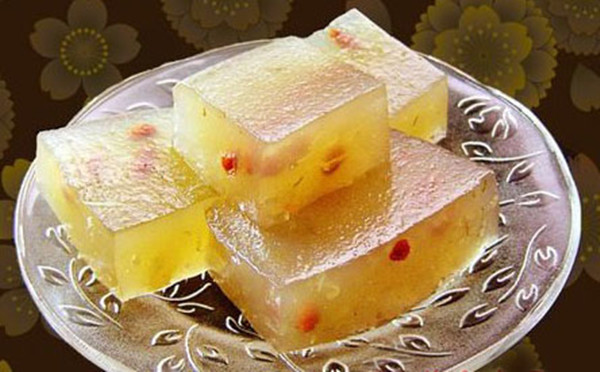
Eating Double Ninth Cake
The Double Ninth cake is also known as "chrysanthemum cake" or "flower cake". It dates back to the Zhou Dynasty (the 11th century – 256 BC). It is said that the cake was originally prepared after autumn harvests for farmers to have a taste of what was just in season, and it gradually grew into the present cake for people to eat on the Double Ninth Day.
The cake was usually made of glutinous rice flour, millet flour or bean flour. In the Tang Dynasty, its surface was usually planted with a small pennant of multi-colored paper and bore at its center the Chinese character "ling" (order). The Double Ninth cake in the Song Dynasty was usually made with great care a few days before the Double Ninth Day, its surface planted with colored pennants and inlaid with Chinese chestnuts, ginkgo seeds, pine nut kernels and pomegranate seeds.
It was a nice festive present for relatives or friends. In the Ming Dynasty, the imperial families customarily began to eat the cake early on the first day of the 9th lunar month to mark the festival, and the common people usually enjoyed with their married daughters the festive cake, which was basin-sized and covered with two or three layers of jujubes. The cake in the Qing Dynasty was made like a 9-storied pagoda, which was topped with two sheep images made of dough. The cake, so made, was called Chong Yang Gao in Chinese, which means Double Ninth cake as "Chong" means double, "Yang" dichotomously suggests nine and sheep, and "Gao" means cake. Also, because "Gao" (cake) shares the pronunciation with "Gao" (high, tall), people want to get a higher position in their life through having Gao on the Double Ninth Day.
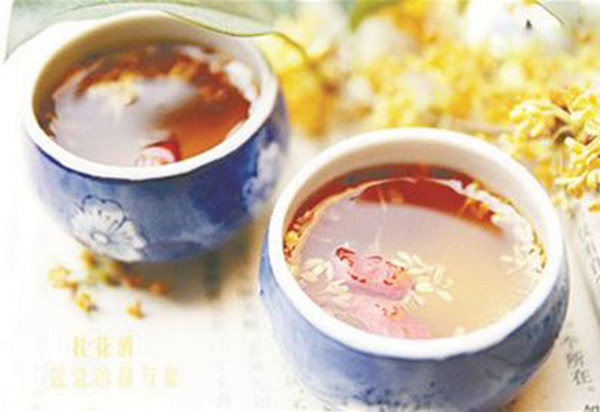
Chrysanthemum Flower Wine
It was originally a day for farmers to celebrate bumper harvests of crops. The festival was born in the Warring States period (475-221 BC), became popular in the Han Dynasty (206 BC-220 AC). At that time, Queen Lv was so jealous of Concubine Qi, who is one of the favorite of Liu Bang (the first emperor of the Han Dynasty, 256 or 247-195 BC), that she ill-treated the latter and drove her maid out of the imperial palace to marry a common people after the emperor’s death.
This maid, who is known as Miss Jia, told people that in the imperial palace, every ninth day of the ninth lunar month, they wear in hair small cornel twigs (dogwoods) and drink chrysanthemum wine, otherwise there would be disasters. Later many common people followed the custom and it gradually prevailed all over the country.
The chrysanthemum flower wine is unique in brewing. In ancient time’s people, some say, usually picked fresh chrysanthemum flowers and leaves on the 9th of the 9th lunar month, and brewed the mixture of them and grains into the wine, which would not be drunk until the same day next year.
The wine is said to have wholesome effects on sharpness of the eye, alleviation of headache, drop of hypertension, reduction of weight and removal of stomach trouble, thus contributing to longevity. It is said that the drinkers of the chrysanthemum wine would be free from evil and have strong physique against cold weather.
The chrysanthemum wine, infused with cornel twigs (dogwood) fruit, has wholesome effects on assuagement of pain and regulation of the flow of vital energy. While climbing mountains on the Double Ninth Day, ancient Chinese liked to wear cornel twigs (dogwood) in their hair and drank the wine.

Climbing Heights
People like to climb heights (mountains) on this festival, so Double Ninth Festival is also called "Mountain-climbing Festival". The 9th lunar month, with clear autumn sky and bracing air, is a good time for sightseeing. An outing lover, who stands on a height looking afar in the month, will have a panoramic view of a blue sky with pale clouds and dark green mountains, which makes him feel carefree and joyful. So people, both ancient and present, love to go sightseeing this month. People in the Western Han Dynasty (206 BC-25 AC) liked to ascend a height in the suburbs of Chang’an (the then national capital and present Xi’an) on the 9th day of the month to enjoy sceneries, the activity being known as height ascending; people, in the Three Kingdoms period (220-265) and the Jin Dynasty (265-420), even more liked the activity to feast their eyes on the autumn country view; sightseers in the Chang’an on the day, a man-made tourist attraction with the Qu’jiang Pool, the Ci’en Temple and the Wild Goose Pagoda to its southwest; the Ming Dynasty (1368-1644) emperors liked to ascend the Wanshou Hill in Beijing to mark the day; and the Qing Dynasty (1616-1911) emperors chose to ascend, on the day, the man-built hills in the imperial garden in Beijing. It is really refreshing to climb mountains and enjoy the beauty of nature at this bright and clear time in autumn. Apart from expelling bad luck and disasters, climbing mounting also indicates "climbing to a higher position", and it is also an important reason why ancient people pay much attention about this custom. Another reason that climbing mountains are valued by people, especially by the elderly is that is has a meaning of "climb to a longevous life". Also for this reason people believe that climbing mountains can make people live a more longevous life.

Family Get-togethers
The Double Ninth Festival is also a time for family get-togethers. It is an occasion to remember one's ancestors, the sacrifices they made and the hardships they underwent. Often, family outings are organised during which people search to renew their appreciation of nature and to reaffirm their love and concern for family members and close friends. The 9th day of September in the lunar calendar is "the Chinese Chong Yang Festival" and a happy occasion in autumn. According to the traditional theory of "Yin" and "Yang", both the 9th month and the 9th day of the month belong to "Yang", which means positive andmasculine, and "Chong" means double, thus it is called "Chong Yang". People often gather for a party, appreciatechrysanthemums, pin the leaves of Cornus on clothes. And the custom of climbing mountains and eating a special cake also features the day.





